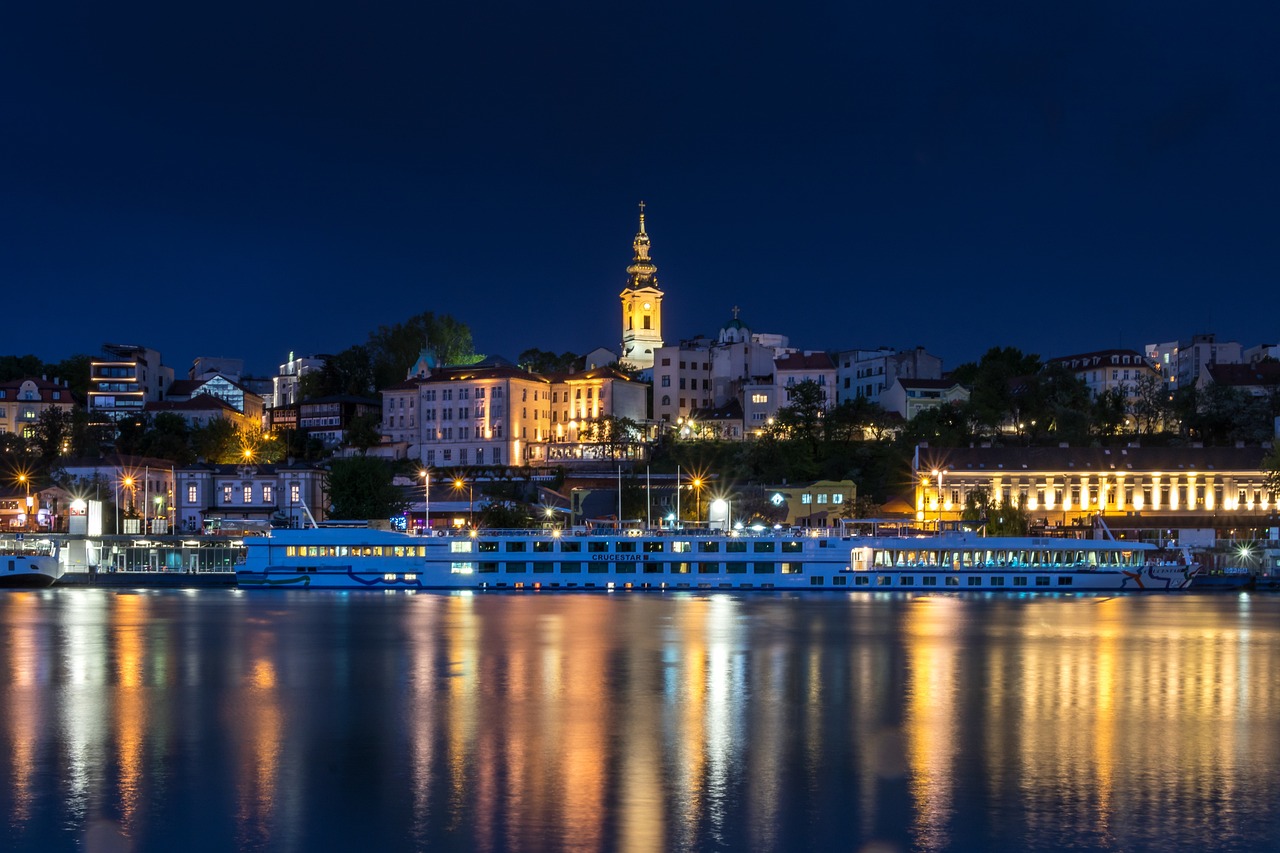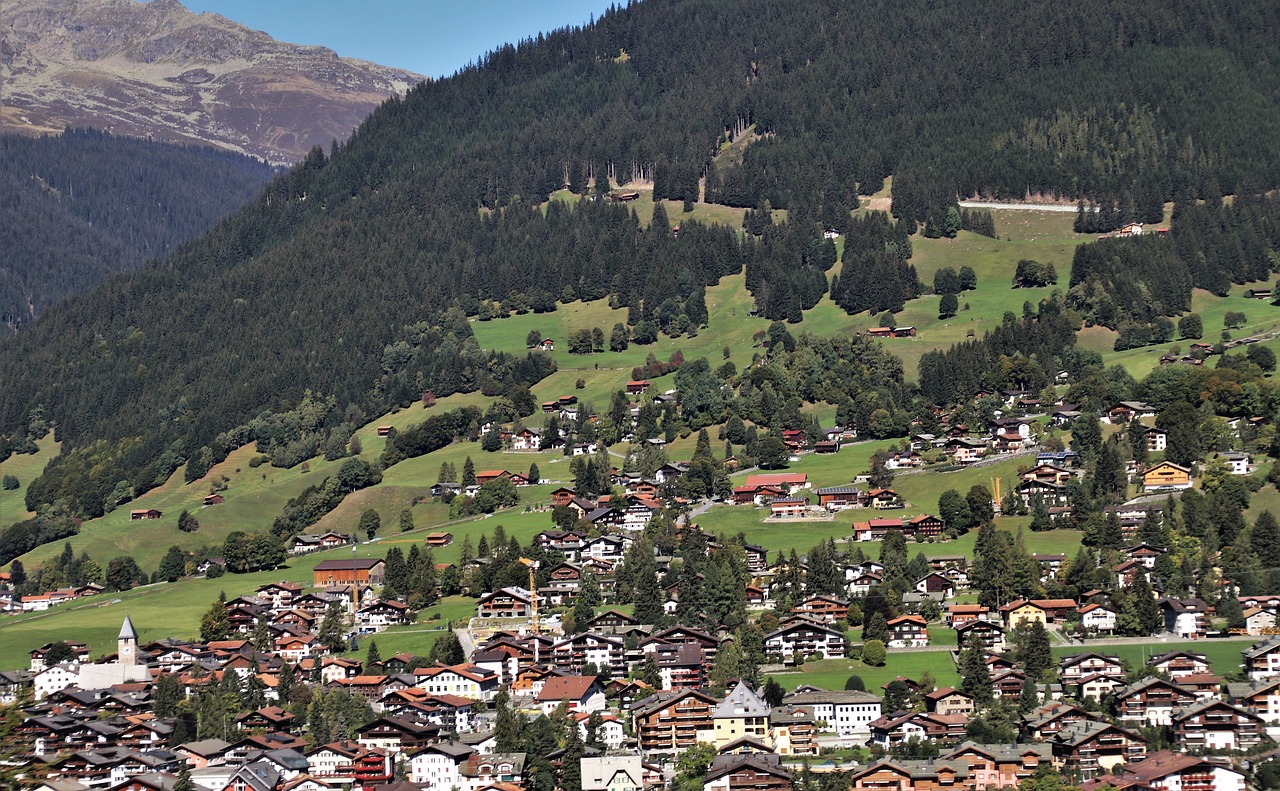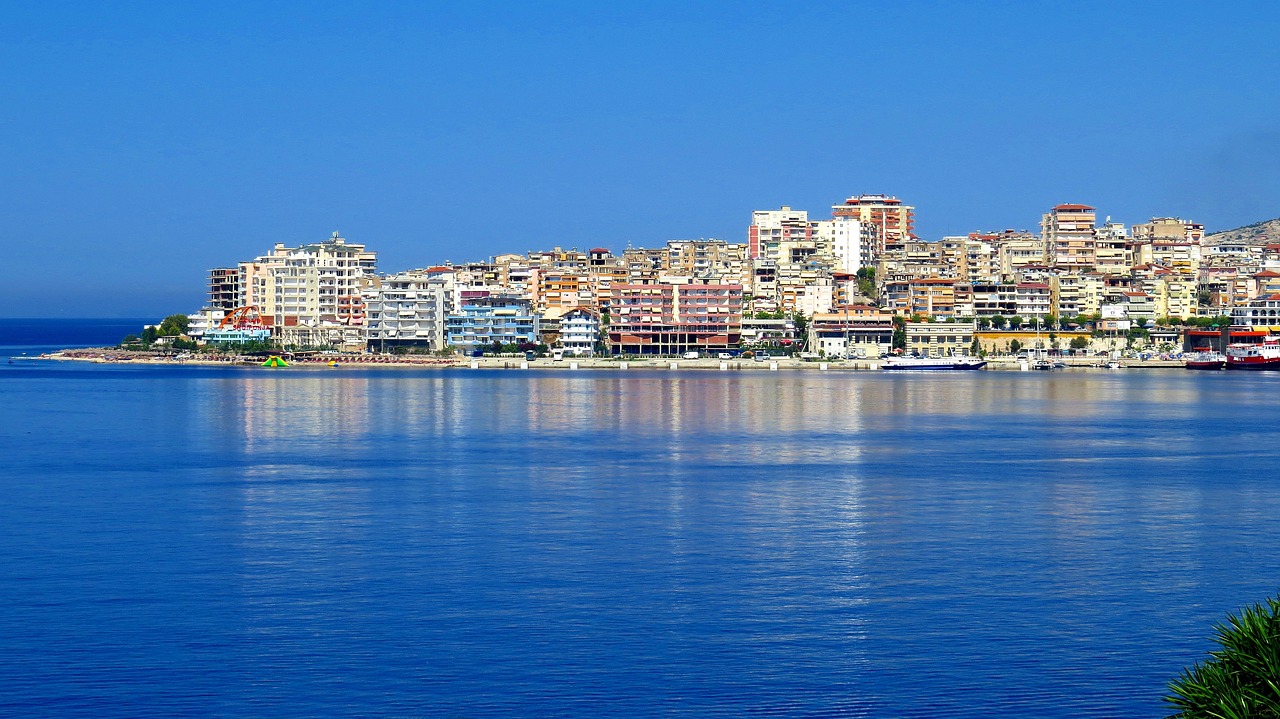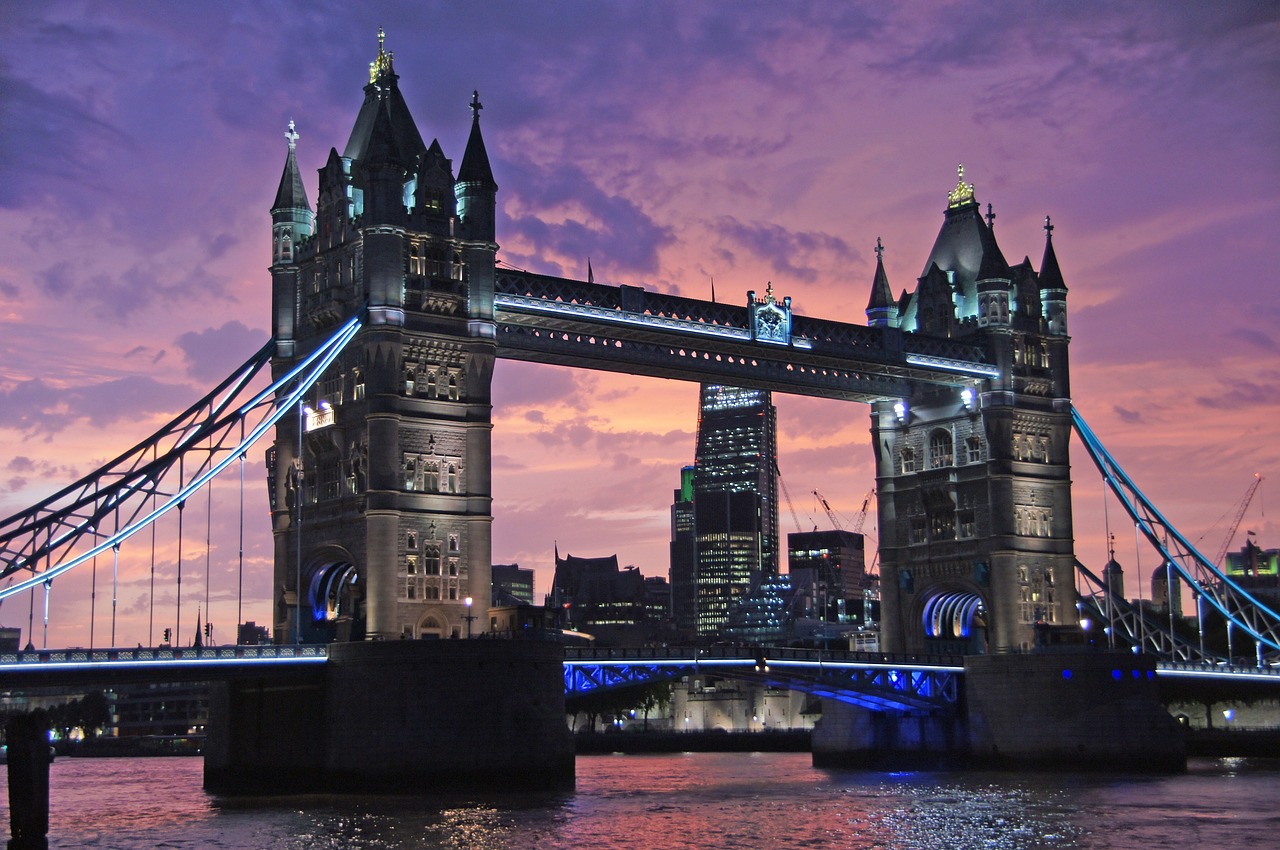Belgrade is the capital and largest city of Serbia, located in southeastern Europe at the confluence of the Sava and Danube rivers. It has a rich and complex history dating back to ancient times, with various empires and civilizations leaving their mark on the city’s architecture, culture, and traditions. Today, Belgrade is a vibrant and modern city that serves as a major center of Serbia.
Belgrade is a unique mix of Eastern and Western cultures. Unlike other European capitals, it has a more laid-back vibe and is known for its bohemian charm. In terms of affordability, Belgrade is much cheaper compared to other European capitals like Paris, London or Berlin. It offers a diverse range of cultural and entertainment options, making it a popular destination for tourists. The city is also famous for its nightlife, which can rival some of the best party cities in the world. In comparison to other cities in the Balkan region, Belgrade stands out as a bustling metropolis with a historic architecture and cultural heritage.
Short History
Belgrade has a long history that spans over 7,000 years. The first recorded settlement in the area dates back to the 4th millennium BC, and the city itself was founded in the 3rd century BC by the Celts. Over the centuries, Belgrade has been conquered and ruled by various powers, including the Romans, Byzantines, Ottomans, and Austro-Hungarians.
In the early 20th century, Belgrade became the capital of the Kingdom of Yugoslavia, and following World War II, it became the capital of the Socialist Federal Republic of Yugoslavia. During this time, Belgrade experienced rapid modernization and urbanization, becoming a major industrial and cultural center.
Following the breakup of Yugoslavia in the 1990s, Belgrade became the capital of Serbia and continues to be an important economic, cultural, and political center in the Balkans.
Architecture
Belgrade has a colorful architectural heritage that reflects the city’s diverse cultural influences over the centuries. The city’s architecture has been influenced by Roman, Byzantine, Ottoman, and Austro-Hungarian styles.
One of the most notable architectural styles in Belgrade is the Serbian-Byzantine style, which is characterized by the use of red bricks, domes, and decorative mosaics. This style is evident in the city’s most famous landmark, the Belgrade Fortress, which dates back to the 2nd century AD.
During the Ottoman period, Belgrade was heavily influenced by Islamic architecture, which can be seen in the city’s mosques, such as the Bajrakli Mosque and the Mosque of Belgrade.
In the 19th and early 20th centuries, Belgrade underwent significant urbanization and development, resulting in the construction of numerous Neo-Renaissance, Art Nouveau, and Secessionist buildings. These styles are particularly evident in the downtown area of the city, with examples such as the Old Palace, the National Museum of Serbia, and the Terazije Fountain.
In the post-World War II era, Belgrade embraced modernist architecture, and many high-rise buildings were constructed. Some notable examples include the Genex Tower, the Western City Gate, and the Palace of Serbia.
Today, Belgrade’s architecture continues to evolve, with contemporary buildings such as the Ušće Tower and the Beograd na vodi development adding a modern flair to the city’s skyline.
Museums and Galleries
Belgrade is a cultural and historical hub of the country with a numerous museum and gallery scene. Here are some of the most interesting museums and galleries to visit in Belgrade:
- National Museum of Serbia: The oldest and largest museum in Serbia, with a collection of over 400,000 artifacts ranging from ancient art to modern-day pieces.
- Museum of Yugoslav History: A museum dedicated to the history of Yugoslavia and its leaders, including Josip Broz Tito, with a large collection of objects and archives.
- Nikola Tesla Museum: A museum dedicated to the life and work of Serbian-American inventor Nikola Tesla, showcasing his inventions and personal belongings.
- Museum of Contemporary Art: One of the largest contemporary art museums in the Balkans, with a collection of over 8,000 works by Serbian and international artists.
- Belgrade City Museum: A museum dedicated to the history of Belgrade, showcasing its cultural, political, and economic development through the centuries.
- Gallery of Frescoes: A unique gallery showcasing frescoes from Serbian medieval monasteries, with over 1,500 fragments and complete frescoes on display.
- Museum of Applied Arts: A museum showcasing decorative and applied arts from Serbia and the Balkans, including ceramics, metalwork, textiles, and furniture.
These museums and galleries showcase the country’s heritage, as well as its contemporary art scene. From ancient artifacts to modern-day works, there is something for every art and history lover to explore in the city.
Landmarks and Monuments
Belgrade is a city with many landmarks and monuments that reflect its past. Here are some of the most interesting ones worth visiting:
- Kalemegdan Fortress: This ancient fortress is one of the most visited tourist attractions in Belgrade. It is located in the heart of the city, overlooking the confluence of the Sava and Danube rivers.
- St. Sava Temple: One of the largest Orthodox churches in the world, this impressive temple is dedicated to St. Sava, the founder of the Serbian Orthodox Church.
- Republic Square: The main square in Belgrade, it is home to the National Museum and National Theatre, as well as many cafes, shops, and restaurants.
- Nikola Tesla Museum: Dedicated to the famous Serbian-American inventor, this museum houses many of Tesla’s personal belongings and inventions.
- Skadarlija: This bohemian quarter in the city center is known for its cobblestone streets, traditional restaurants, and lively atmosphere.
- Ada Ciganlija: A popular recreational area in Belgrade, Ada Ciganlija is an artificial lake with many sports facilities, beaches, and restaurants.
- House of Flowers: The final resting place of the former Yugoslav leader, Josip Broz Tito, this memorial complex is dedicated to his life and achievements.
Visitors to the city can enjoy exploring these sites and learning about the city’s fascinating history. From ancient fortresses and temples to bohemian quarters and recreational areas, there is something for everyone to discover in this lively city.
Parks and Green Spaces
Belgrade has a lot of green spaces and parks to offer visitors, whether they are looking for a peaceful walk or an outdoor adventure. Here are some of the spaces worth visiting in Belgrade:
- Kalemegdan Park: Located in the heart of Belgrade, Kalemegdan Park is the city’s largest park and one of its most popular attractions. It features a fortress, a zoo, a military museum, and several monuments.
- Ada Ciganlija: A popular destination for swimming, sunbathing, and water sports, Ada Ciganlija is an artificial lake located just a few kilometers from the city center. It has a number of cafes, restaurants, and sports facilities.
- Topčider Park: A beautiful park located in the heart of Belgrade, Topčider Park is known for its many walking paths, gardens, and fountains. It also has a children’s playground and a restaurant.
- Tašmajdan Park: A large park located in the city center, Tašmajdan Park is known for its many sports facilities, including a swimming pool, tennis courts, and a football field. It also has a small lake and several cafes.
- Zvezdara Forest: Located on the outskirts of Belgrade, Zvezdara Forest is a popular destination for hiking and picnicking. It has several walking trails and a few restaurants.
- Miljakovac Forest: A large forest located in the suburbs of Belgrade, Miljakovac Forest is a popular destination for hiking, biking, and picnicking. It has several walking trails and a few cafes.
- Botanical Garden Jevremovac: Located near the city center, the Botanical Garden Jevremovac is one of the oldest and largest botanical gardens in Serbia. It features a wide variety of plants and a beautiful greenhouse.
Whether you are a nature lover, a sports enthusiast, or just looking for a relaxing place to unwind, the parks and green spaces of Belgrade are definitely worth a visit.
Beaches
Belgrade is not a coastal city, and there are no beaches nearby. The closest beach destination would be Ada Ciganlija, a river island on the Sava River that has a beach-like atmosphere and various water activities. It offer many recreational activities such as boat tours and river cruises.
Shopping Districts
Belgrade has a variety of shopping options to suit different tastes and budgets. Here are some of the best shopping districts in Belgrade:
- Knez Mihailova Street: Known as the “heart of Belgrade,” this pedestrian street is lined with designer boutiques, high-end shops, and cafes.
- Skadarlija: This historic street is lined with traditional Serbian restaurants, souvenir shops, and art galleries. It’s a great place to buy handmade crafts and souvenirs.
- Kalenic Market: This open-air market is the largest in Belgrade and is known for its fresh produce, meats, cheeses, and other local specialties.
- Usce Shopping Center: This modern shopping center is located on the banks of the Sava River and features over 140 shops, restaurants, and a cinema.
- Stari Grad: The old town of Belgrade is home to numerous small shops and boutiques, selling everything from antiques and traditional Serbian crafts to trendy fashion.
From high-end designer boutiques to local markets selling fresh produce and handmade crafts, visitors are sure to find something to suit their interests.
Food and Drink
Belgrade has a diverse culinary scene, influenced by its location at the crossroads of Eastern and Western Europe. Here are some must-try foods and drinks in Belgrade:
- Ćevapi – grilled minced meat sausages served with onions, kajmak (a type of dairy spread), and ajvar (a red pepper relish).
- Pljeskavica – a Serbian-style burger made of a mix of beef, pork, and lamb, often served with kajmak and ajvar.
- Karadjordjeva šnicla – a breaded and stuffed veal dish named after the famous Serbian prince, Karađorđe.
- Sarma – cabbage leaves stuffed with a mix of ground meat, rice, and spices.
- Kajmak – a rich and creamy dairy spread made from cow or sheep milk.
- Rakija – a type of fruit brandy made from plums, apricots, or other fruits, and is a popular drink in Serbia.
- Belgrade beer – Serbia has a growing craft beer scene, and Belgrade is home to several breweries, offering a variety of local beers.
- Bela voda – a type of mineral water that is famous in Serbia for its healing properties.
- Gužvara – a traditional Serbian pastry filled with cheese and spinach.
- Baklava – a sweet pastry made of layers of filo pastry filled with chopped nuts and syrup.
In addition to the traditional Serbian cuisine, Belgrade also offers a wide range of international cuisine options, including Italian, Japanese, Chinese, and Mexican food, among others.
Transportation
Belgrade offers a variety of transportation options to move around the city. Here are some of the best ways to get around in Belgrade:
- Public Transportation: Belgrade has an extensive public transportation network that includes buses, trams, and trolleybuses. The tickets are affordable and can be purchased at kiosks, newsstands or directly from the driver. However, be aware that during peak hours, public transport can be overcrowded.
- Taxi: Taxis are available throughout the city and are relatively inexpensive. It is advisable to use a reputable taxi company or order a taxi by phone rather than hailing one on the street to avoid potential scams.
- Bike: Belgrade has a bike-sharing system called “Smartbike” which offers bikes for rent at affordable prices. There are also many bike rental shops throughout the city for those who prefer to explore the city on their own.
- Walking: Belgrade is a walkable city, and many of the city’s attractions are located within walking distance of each other. Walking is an excellent way to explore the city’s beautiful streets and neighborhoods.
- Car: Renting a car is an option for those who want to explore the city and surrounding areas at their own pace. However, be aware that traffic can be heavy and parking can be difficult to find in some areas.
Overall, public transportation, walking, and biking are convenient and cost-effective ways to move around Belgrade.
Safety
Belgrade is generally a safe city for visitors. However, as with any city, it is important to take necessary precautions and remain aware of your surroundings. Petty crimes such as pickpocketing and theft may occur, especially in crowded areas or on public transportation. It is recommended to keep an eye on your belongings, avoid flashing valuables in public, and stay in well-lit areas at night. Additionally, it is best to avoid any political demonstrations or protests.
Expensive or Cheap
Compared to other European cities, Belgrade is generally considered to be an affordable destination. Prices for accommodation, food, and transportation are relatively lower than in Western European cities. However, prices can vary depending on the season and the specific area of the city. In general, the city center and tourist areas tend to be more expensive than other neighborhoods. Overall, Belgrade can be a great destination for travelers on a budget.
Best Time to Travel
The best time to travel to Belgrade, Serbia is during the months of May to September when the weather is warm and pleasant for exploring the city. The peak tourist season is in July and August, so it can be crowded and prices for accommodations may be higher. Spring and fall can also be good times to visit for cooler temperatures and fewer crowds. However, keep in mind that winter in Belgrade can be quite cold and snowy, so it may not be the best time for outdoor activities.
Date Ideas and Activities
Belgrade is an exciting city with plenty of romantic and fun date ideas, activities, and experiences for couples to enjoy. Here are some of the top suggestions:
- Walk along the Sava River: Take a romantic stroll along the Sava River and enjoy the beautiful views of the city.
- Visit Kalemegdan Fortress: This historic fortress offers stunning views of the city and is a great place to watch the sunset.
- Explore Skadarlija: Known as the bohemian quarter of Belgrade, Skadarlija is full of cozy cafes and restaurants, perfect for a romantic dinner or drinks.
- Take a bike tour of the city: Rent a bike and explore the city’s landmarks and neighborhoods, like the St. Sava Temple and the Zemun neighborhood.
- Visit the Nikola Tesla Museum: Learn about the life and work of one of the greatest inventors of all time at this museum.
- Go wine tasting: Serbia has a long and rich wine-making history, so why not visit a local winery and try some of the best wines the country has to offer.
- Take a boat ride along the Danube: Enjoy the beauty of the Danube River on a relaxing boat ride, while taking in the stunning views of the city.
- Visit the Belgrade Zoo: A great option for animal lovers, the Belgrade Zoo is home to a variety of animals from around the world.
- Enjoy a spa day: Relax and unwind with a spa day at one of Belgrade’s many spas and wellness centers.
- Go to a concert or show: Belgrade has a thriving arts and culture scene, with many music concerts, theater performances, and art exhibitions taking place throughout the year.
Overall, Belgrade has a lot to offer for couples looking for fun and romantic ideas and experiences. From exploring the city’s landmarks and neighborhoods to enjoying a spa day or attending a concert, there’s something for everyone to enjoy in this entertaining city.
Fun and Interesting Facts
Belgrade is a city that is full of fascinating history, stunning architecture, and cultural diversity. Here are some fun and interesting facts about Belgrade:
- Belgrade Fortress: The Belgrade Fortress is one of the oldest structures in the city, dating back to the 2nd century AD. It is located on a hill overlooking the confluence of the Danube and Sava rivers.
- Nikola Tesla Museum: The museum is dedicated to the famous Serbian inventor and scientist Nikola Tesla, who is known for his contributions to the development of modern electrical power systems.
- Ada Ciganlija: Ada Ciganlija is a popular recreational area that offers a wide range of activities, including swimming, sunbathing, cycling, and rollerblading.
- Kalemegdan Park: Kalemegdan Park is a vast green space in the city center, and it offers stunning views of the Danube and Sava rivers.
- Skadarlija: Skadarlija is a bohemian street in the city center that is known for its traditional Serbian restaurants and live music.
- Rakija: Rakija is a popular Serbian fruit brandy that is traditionally consumed as an aperitif.
- Bajrakli Mosque: The Bajrakli Mosque is one of the oldest mosques in Belgrade, and it is a symbol of the city’s multicultural heritage.
- St. Sava Temple: St. Sava Temple is one of the largest Orthodox churches in the world and a significant landmark in Belgrade.
- Ada Bridge: The Ada Bridge is a cable-stayed bridge that spans the Sava River and offers stunning views of the city skyline.
- Belgrade Underground: The Belgrade Underground is a network of tunnels and bunkers that date back to World War II and the Cold War era.
Whether you’re interested in exploring the city’s ancient fortresses, tasting traditional Serbian food and drink, or simply soaking up the vibrant atmosphere, Belgrade is sure to leave a lasting impression.
Conclusion
Belgrade, the capital city of Serbia, is a vibrant and dynamic destination that offers visitors a unique blend of history, culture, and modernity. From its fascinating architecture, bustling nightlife, and delicious cuisine to its beautiful parks, historic landmarks, and museums, there is something for everyone to enjoy in this city.
Belgrade has a valuable history that is reflected in its diverse architectural styles, from the ancient Roman ruins to the Ottoman Empire’s influence, as well as the city’s modernist architecture. The city is also known for its beautiful parks and green spaces, such as Kalemegdan Park, which offers stunning views of the city.
Additionally, Belgrade is renowned for its lively nightlife scene, with a plethora of bars, clubs, and live music venues to choose from. Foodies will love the city’s delicious cuisine, which draws inspiration from both Eastern and Western European culinary traditions.
Visitors can also explore Belgrade’s fascinating museums, including the National Museum, which showcases Serbia’s rich history and cultural heritage, and the Nikola Tesla Museum, dedicated to the famous inventor and scientist.
Overall, Belgrade is a destination that offers visitors a unique and exciting experience, filled with rich history, vibrant culture, and a bustling modern cityscape.



